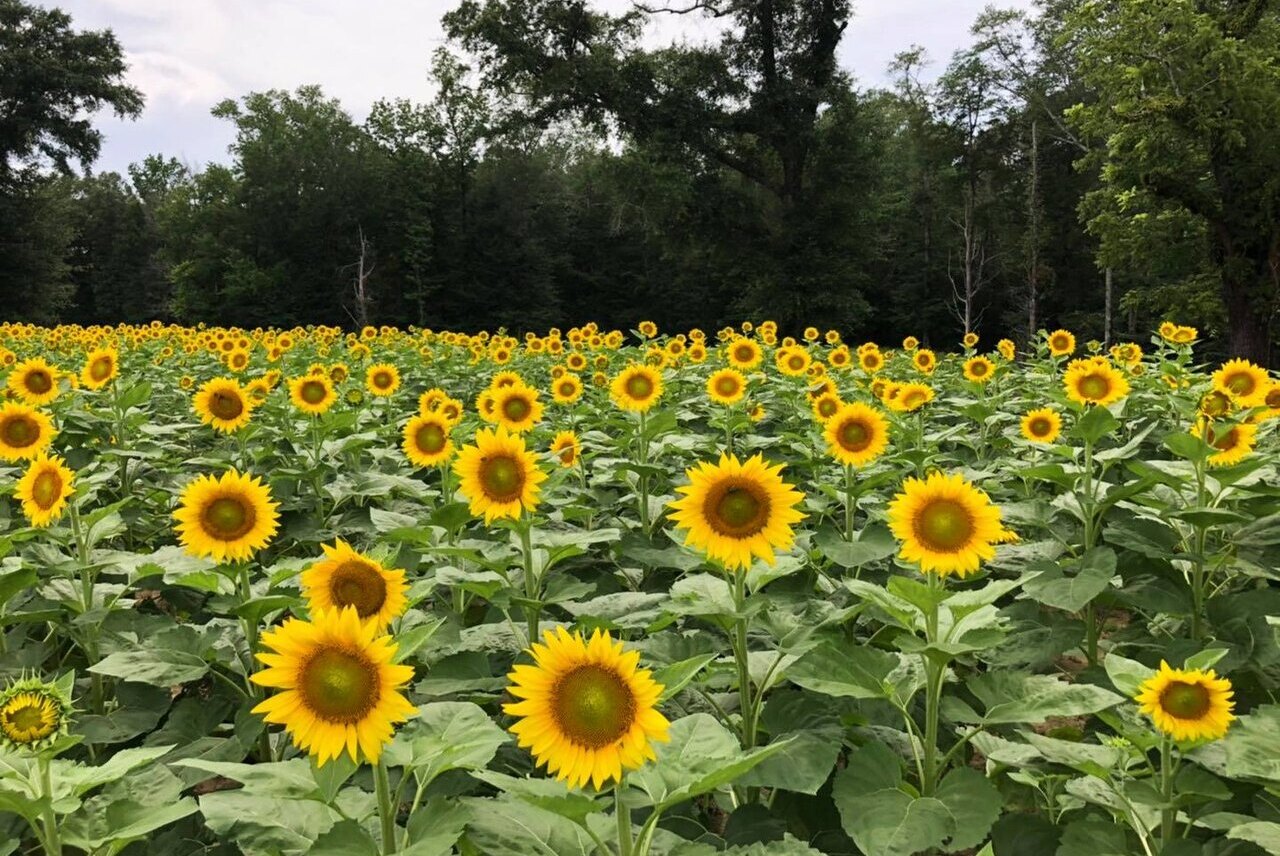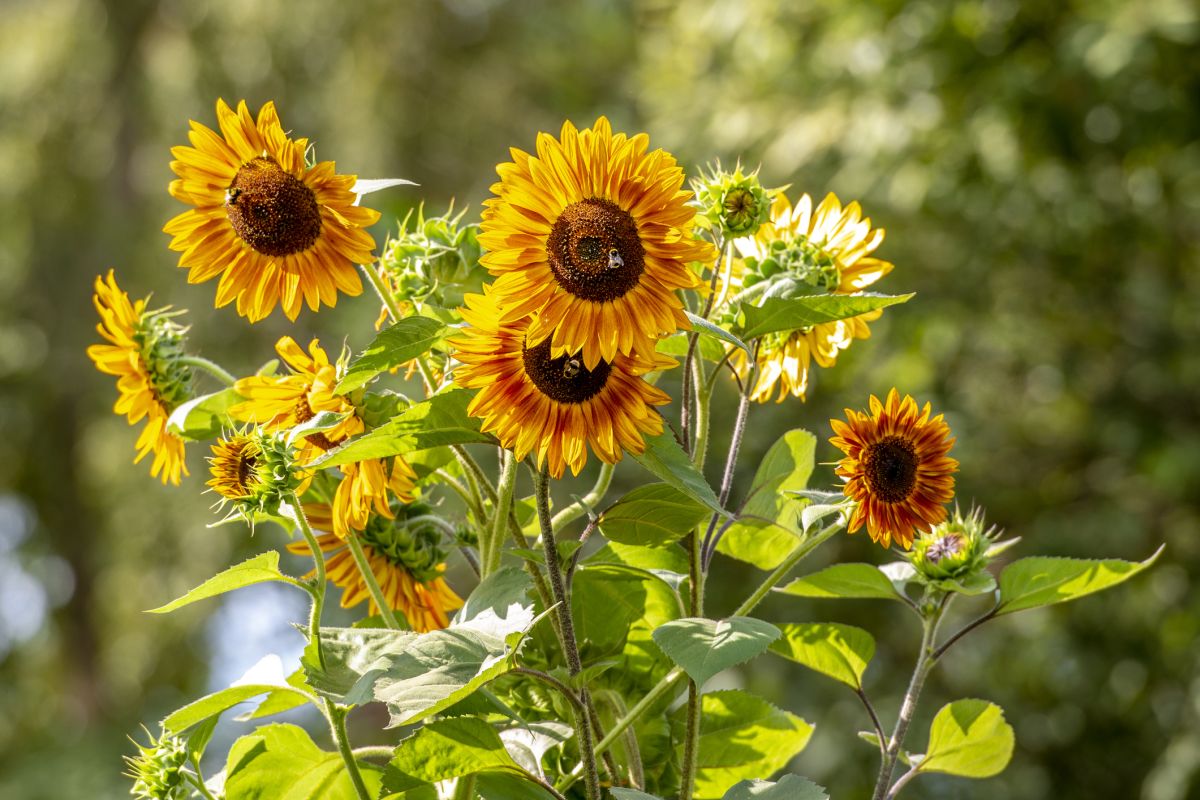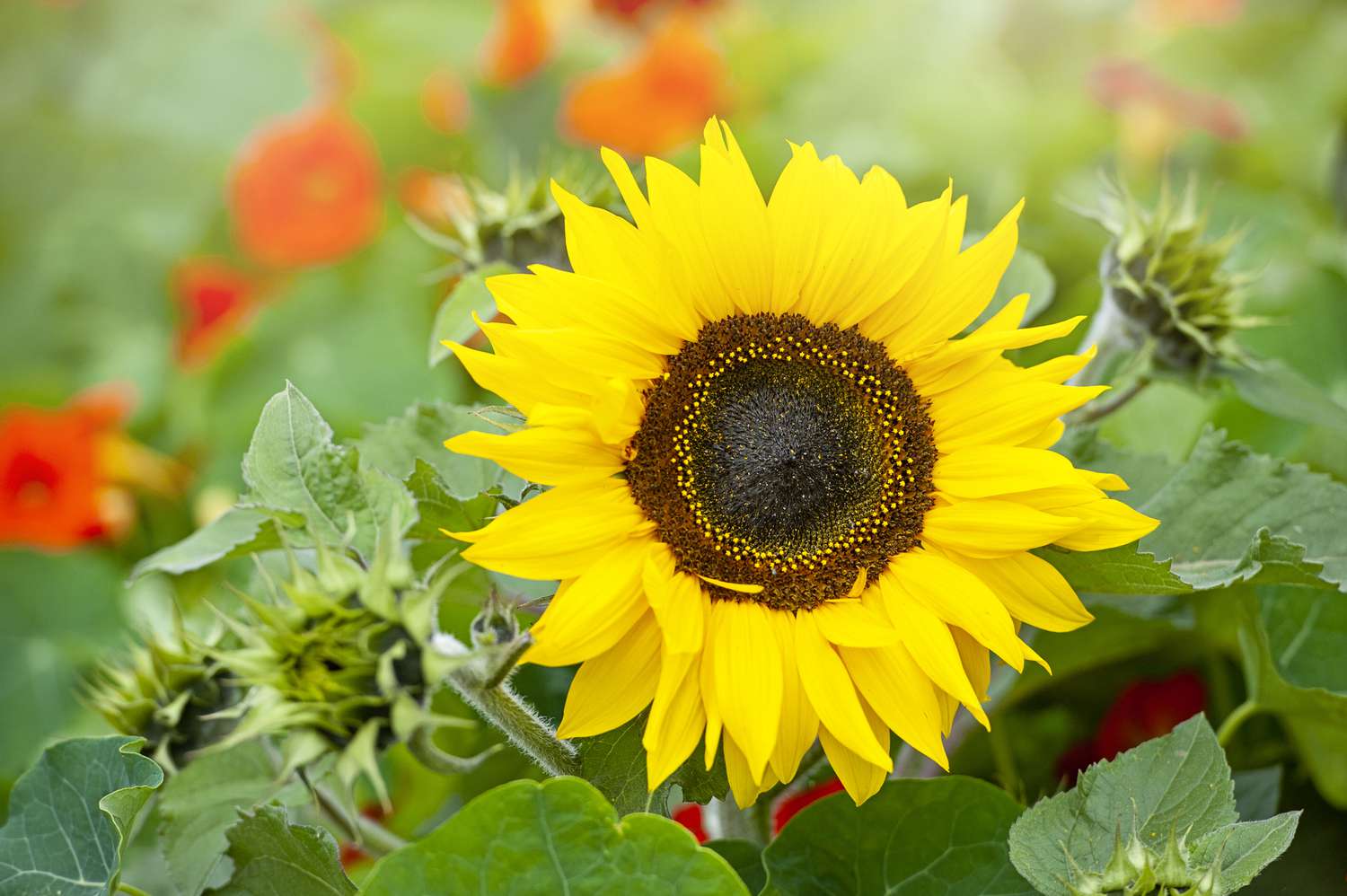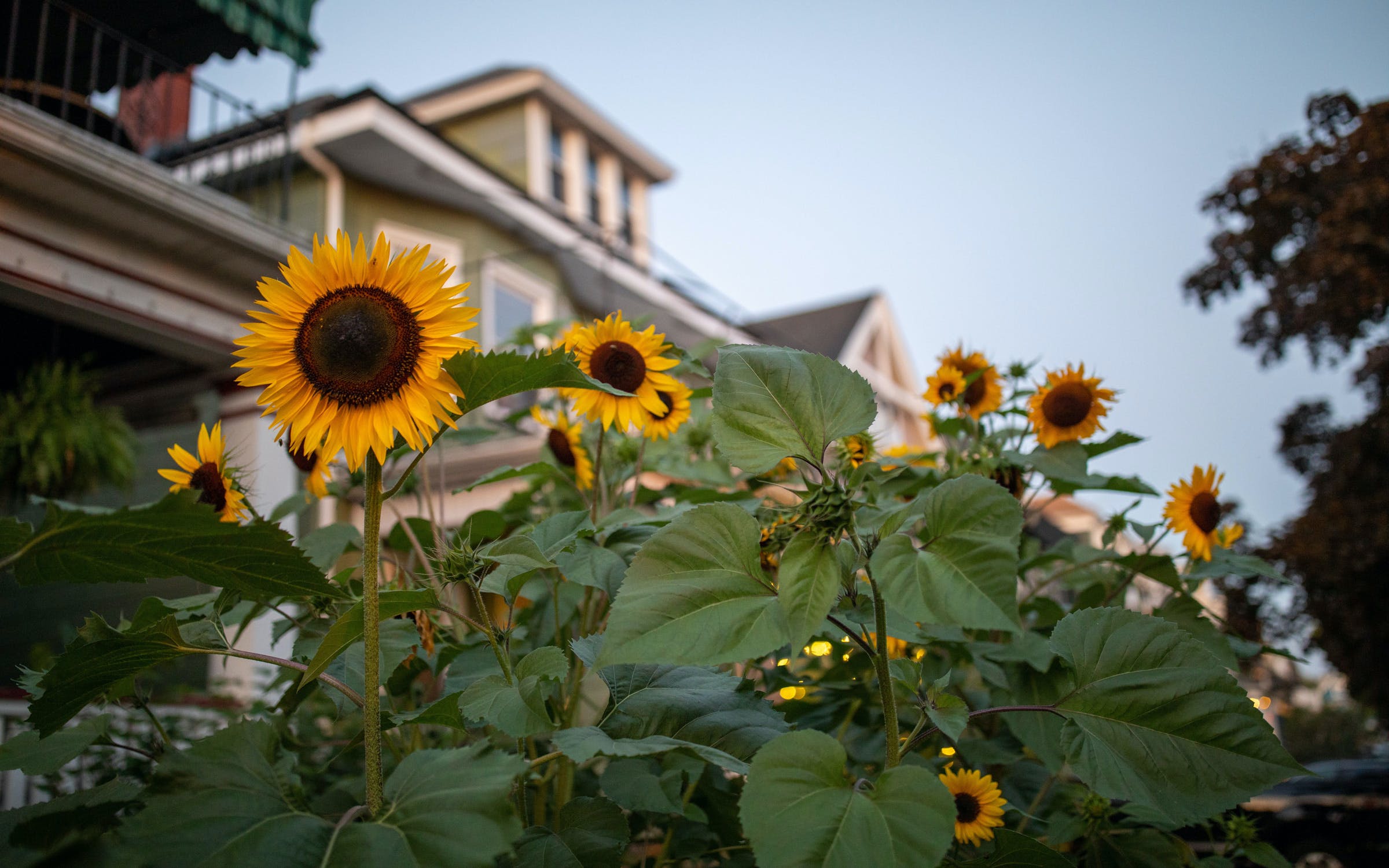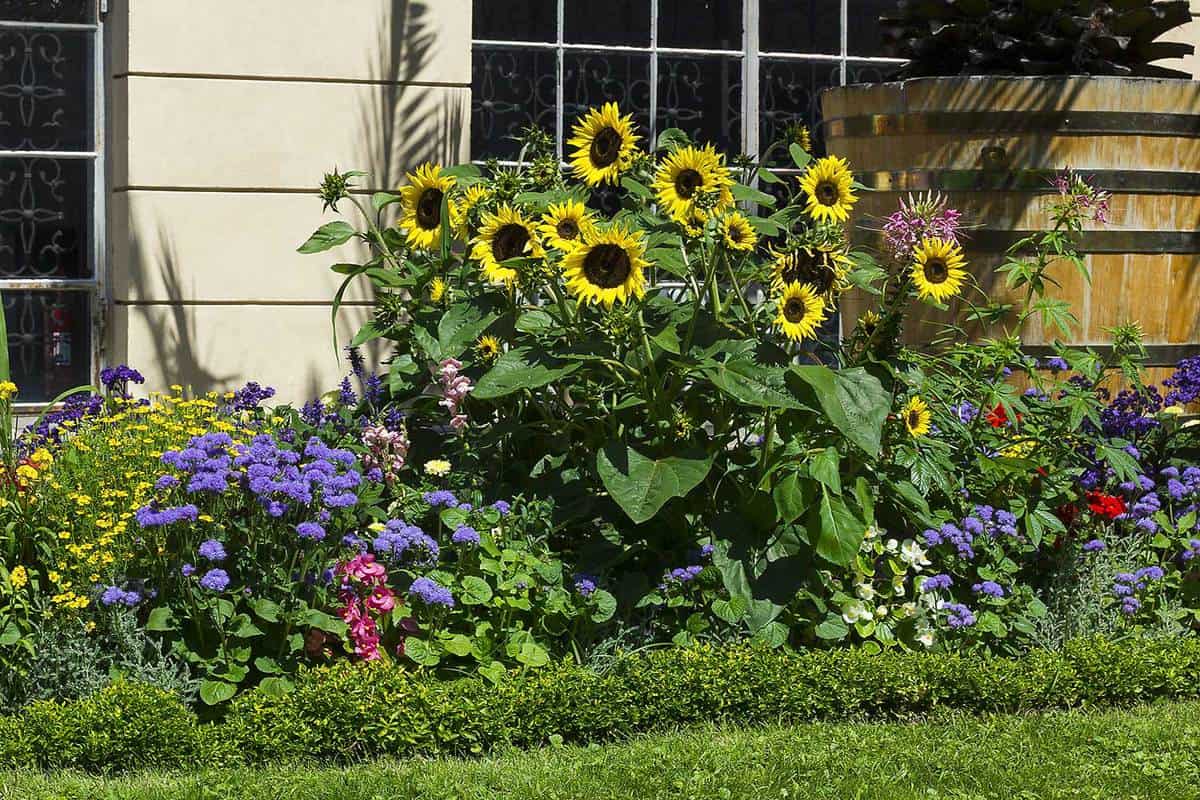Home>Types of Gardening>Ornamental Gardening>What Should Not Be Planted Near Sunflowers?


Ornamental Gardening
What Should Not Be Planted Near Sunflowers?
Modified: January 22, 2024
Find out what plants to avoid planting near sunflowers with our expert tips and advice for successful ornamental gardening.
(Many of the links in this article redirect to a specific reviewed product. Your purchase of these products through affiliate links helps to generate commission for Chicagolandgardening.com, at no extra cost. Learn more)
Table of Contents
Introduction
Ornamental gardening is a delightful hobby that brings beauty and tranquility to outdoor spaces. One popular choice among gardeners is the sunflower, known for its vibrant colors and towering height. Sunflowers not only add a touch of natural splendor to landscapes but also attract bees and birds, making them a favorite among pollinator enthusiasts.
However, when it comes to planting sunflowers, it’s essential to consider the surrounding plants carefully. Not all plants thrive when grown in close proximity to sunflowers. Some plants may compete for resources, while others may attract pests and diseases that can harm sunflowers. To maintain a healthy and thriving garden, it is crucial to know which plants should not be planted near sunflowers.
In this article, we will discuss the reasons why certain plants should be avoided when planting alongside sunflowers. We will also highlight specific plants that should not be grown near sunflowers to ensure the overall well-being of your ornamental garden.
By understanding and implementing these guidelines, you can create a harmonious and visually appealing garden that allows your sunflowers to thrive to their full potential. Let’s explore the reasons and plants to avoid when planting near sunflowers.
Reasons to Avoid Planting Certain Plants near Sunflowers
While sunflowers are generally hardy plants that can tolerate a wide range of growing conditions, there are several reasons why certain plants should not be planted nearby. Understanding these reasons will help you make informed decisions when planning your ornamental garden:
- Resource Competition: Sunflowers have extensive root systems that need access to water and nutrients. Planting tall or large plants near sunflowers may result in competition for these resources, stunting the growth of both plants.
- Light Shade: Sunflowers require a significant amount of sunlight to thrive. Planting shade-producing plants nearby can cast shadows that may inhibit the sunflower’s growth and flowering capabilities.
- Pest Attraction: Some plants act as magnets for pests, attracting insects that can damage or destroy sunflowers. By avoiding these plants, you can help reduce the risk of pest infestations and promote the overall health of your sunflowers.
- Disease Spread: Certain plants are more susceptible to diseases that can also affect sunflowers. Planting these disease-prone plants near sunflowers increases the chances of disease transmission, compromising the health and vitality of your sunflowers.
- Root Interference: Plants with aggressive or invasive root systems can disrupt the growth and stability of sunflowers. They may compete for space and resources underground, leading to potential damage or even death of the sunflowers in the long run.
By being mindful of these reasons, you can make informed choices about which plants to avoid planting near sunflowers. Now, let’s explore some specific plants that should not be grown in close proximity to sunflowers.
Plants to Avoid Planting near Sunflowers
When planning your garden, it is crucial to choose compatible plants that will coexist harmoniously with your sunflowers. Here are some specific plants to avoid planting near sunflowers:
- Tall or Large Plants: Avoid planting tall or large plants that can overshadow your sunflowers and compete for resources like sunlight and water. Some examples include corn, tomatoes, or tall varieties of beans.
- Competing Plants: Certain plants have aggressive growth habits that can outcompete sunflowers for resources. Avoid planting aggressive spreaders like mint, bamboo, or aggressive vine species close to your sunflowers.
- Invasive Plants: Invasive plant species can quickly take over your garden space and crowd out the sunflowers. Some notorious invasive plants to avoid near your sunflowers include Japanese knotweed, purple loosestrife, or honeysuckle.
- Plants Susceptible to Sunflower Pests or Diseases: Some plant species are more prone to pests or diseases that also affect sunflowers. Avoid planting these susceptible plants to minimize the risk of spreading pests or diseases. For example, avoid growing plants like zinnias, marigolds, or other members of the Asteraceae family close to your sunflowers, as they are susceptible to similar pests and diseases.
By avoiding these plants near your sunflowers, you can help create a favorable growing environment for your sunflowers while reducing the risk of competition, pest infestations, and disease spread.
Remember, maintaining an optimal growing environment is essential for the overall success and health of your sunflowers. By being mindful of the plants you choose to grow near your sunflowers, you can ensure that they have the best chance to thrive and shine in your ornamental garden.
Tall or Large Plants
Tall or large plants can overshadow your sunflowers and compete for essential resources such as sunlight, water, and nutrients. It is best to avoid planting such plants in close proximity to your sunflowers to allow them to reach their full potential. Here are some examples of tall or large plants that should be avoided:
- Corn: Corn plants can grow tall and dense, casting shadows and depriving sunflowers of much-needed sunlight. Additionally, corn’s extensive root system can compete with sunflowers for water and nutrients in the soil.
- Tomatoes: Tomato plants can grow to be quite large and bushy, overshadowing sunflowers and hindering their growth and flowering. They can also attract pests that may damage both the tomatoes and sunflowers.
- Tall Bean Varieties: Certain types of beans, such as pole beans or runner beans, can grow on tall vines and create a significant amount of shade. This can stunt the growth of sunflowers and inhibit their ability to produce flowers.
When planning your garden layout, consider the height and growth habits of plants you want to grow alongside your sunflowers. Opt for shorter or more compact plants that won’t overshadow or compete with your sunflowers for resources. This will allow your sunflowers to thrive and stand tall as the focal point of your garden.
Competing Plants
Competing plants have aggressive growth habits that can outcompete sunflowers for essential resources, including water, nutrients, and space. To ensure the optimal growth and development of your sunflowers, it is advisable to avoid planting these types of plants near them. Here are some examples of competing plants:
- Mint: Mint is known for its vigorous growth and ability to spread rapidly. If planted near sunflowers, mint can quickly take over the garden space, overshadowing and outcompeting sunflowers for resources.
- Bamboo: Bamboo is notorious for its ability to spread and dominate an area. Its rapid growth can easily overtake sunflowers, inhibiting their growth and potentially causing damage to their root systems.
- Aggressive Vine Species: Some vine species, like bindweed or morning glory, can aggressively twine around other plants, choking them and hindering their growth. To prevent these invasive vines from overpowering your sunflowers, it is best to plant them in a different area of your garden.
When selecting companion plants for your sunflowers, choose those with more restrained growth habits that won’t compete aggressively for resources. This will allow your sunflowers to flourish and become the focal point of your ornamental garden.
Invasive Plants
Invasive plants are species that can quickly spread and take over garden spaces, outcompeting other plants, including sunflowers. It is crucial to avoid planting invasive plants near sunflowers to prevent them from overrunning and dominating your garden. Here are some examples of invasive plants to steer clear of:
- Japanese Knotweed: Japanese knotweed is notorious for its aggressive growth and ability to spread rapidly. Its extensive root system can damage structures and push out other plants, including sunflowers.
- Purple Loosestrife: Purple loosestrife is a beautiful but highly invasive plant that can quickly colonize wetland areas. If planted near sunflowers, it can outcompete and crowd out the sunflowers, disrupting their growth.
- Honeysuckle: Honeysuckle is a fast-growing vine that can quickly take over garden spaces and climb and smother other plants. It has a tendency to overwhelm sunflowers, inhibiting their growth and potential.
By avoiding the planting of invasive species near your sunflowers, you can maintain control over your garden’s ecosystem and ensure the healthy growth of your sunflowers. It is always important to check for plants’ invasive tendencies before introducing them to your garden.
Plants Susceptible to Sunflower Pests or Diseases
Certain plants are more susceptible to pests or diseases that can also affect sunflowers. To minimize the risk of spreading pests or diseases and to maintain the health of your sunflowers, it is best to avoid planting these susceptible plants near your sunflowers. Here are some examples:
- Zinnias: Zinnias are beautiful flowering plants that are often a favorite among gardeners. However, they are susceptible to many of the same pests and diseases that afflict sunflowers, such as aphids, powdery mildew, and rust. Planting zinnias near sunflowers may increase the likelihood of infestation or disease spreading between these plants.
- Marigolds: Marigolds are commonly used as companion plants in gardens due to their natural pest-repellent properties. However, they can also be susceptible to pests and diseases like sunflowers. It is best to grow marigolds in a separate area to avoid potential cross-contamination.
- Other Asteraceae Family Members: Plants that belong to the Asteraceae (or daisy) family, such as daisies, asters, and chrysanthemums, may be vulnerable to the same pests and diseases as sunflowers. Avoid planting these members of the Asteraceae family near your sunflowers to prevent the spread of potential issues.
By being cautious about planting susceptible plants near your sunflowers, you can minimize the risk of pests or diseases spreading and maintain the overall health and vitality of your sunflowers.
Conclusion
When it comes to ornamental gardening, sunflowers can be a stunning addition to any garden landscape. However, it is important to be mindful of the plants planted near sunflowers to ensure their optimal growth and health. By avoiding certain plants, you can create a harmonious and thriving garden that showcases the beauty and magnificence of sunflowers.
Throughout this article, we have discussed the reasons why it is essential to avoid planting certain plants near sunflowers. These reasons include resource competition, shade interference, pest attraction, disease spread, and potential root interference. Plants to avoid include tall or large plants that can overshadow sunflowers, competing plants with aggressive growth habits, invasive plant species that can take over the garden, and susceptible plants that are prone to sunflower pests or diseases.
By carefully selecting companion plants that are compatible with sunflowers, you can create a balanced and visually appealing garden space. This will allow your sunflowers to thrive, reaching their full potential in size and vibrancy.
Remember, each gardening journey is unique, and it is important to consider factors such as climate, soil conditions, and individual plant preferences when determining what to plant near sunflowers. With proper planning and consideration, you can create a beautiful garden filled with flourishing sunflowers and complementary plants.
So go ahead, create a garden that showcases the remarkable beauty of sunflowers while promoting the well-being of all the plants involved. Enjoy the colorful display and the joy that comes from tending to your ornamental garden.



